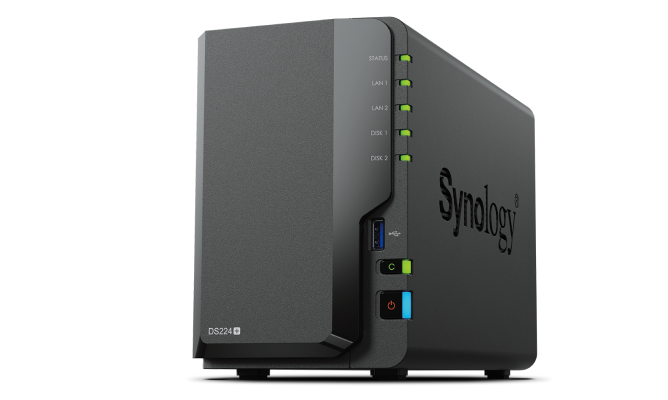Owning Your Own Cloud: Synology NAS
August 18, 2025
Cloud storage has become an essential part of our digital lives. From storing family photos to handling professional documents, the convenience of accessing your data anywhere is undeniable. But with convenience comes dependency—most people rely on Google Drive, Dropbox, iCloud, or OneDrive. What if you could own your own private cloud? This is where Synology NAS steps in.
“Owning your own cloud is not just about data—it’s about sovereignty, privacy, and freedom.”
Why Own Your Own Cloud?
- Data Privacy: Your files are on your server, not a third-party provider’s.
- Unlimited Storage: Add larger drives when needed.
- Cost Efficiency: One-time investment vs recurring subscriptions.
- Full Control: Customize backups, access, and security.
What is Synology NAS?
Synology is a company specializing in Network Attached Storage (NAS) devices. A NAS is essentially a storage server that connects to your network, allowing centralized file sharing, backups, and advanced services like media streaming, virtual machines, and even running Docker containers.
Key Features of Synology NAS
- DSM (DiskStation Manager): Synology’s powerful, user-friendly operating system.
- Synology Drive: Alternative to Google Drive/Dropbox.
- Synology Photos: Alternative to Google Photos.
- QuickConnect: Access your NAS remotely without complex networking setup.
- Plex/Media Server: Stream your movies and music like Netflix.
- Docker & Virtualization: Host apps and environments.
Step-by-Step: Setting Up Your Synology Cloud
1. Choosing the Right NAS Model
Depending on your budget and requirements:
- Home Users: Synology DS220j, DS220+, DS923+
- Power Users: DS920+, DS1621+
- Businesses: RackStation series (RS3617xs+ etc.)
2. Hardware Setup
- Unbox your NAS.
- Install hard drives (choose between HDDs or SSDs).
- Connect NAS to router via Ethernet.
- Power it on and access via browser (
find.synology.com).
3. Initial Configuration
Follow the setup wizard to install DSM. Create your admin account and set up QuickConnect for remote access.
4. Creating Your Cloud
Install Synology Drive Server from Package Center. This enables file syncing across devices like Dropbox/Google Drive.
5. Enabling Mobile Access
- Download DS File or Synology Drive app (iOS/Android).
- Login with QuickConnect ID.
- Access files securely anywhere.
Comparison with Public Cloud
| Feature | Public Cloud (Google/Dropbox) | Synology Cloud |
|---|---|---|
| Ownership | 3rd party controls data | You control data |
| Scalability | Pay monthly for storage | Add larger drives anytime |
| Privacy | Subject to data mining/laws | Private & encrypted |
| Cost | Recurring fees | One-time + power costs |
Popular Use Cases
1. Personal Media Cloud
Store movies, music, and TV shows. Use Plex or Synology Video Station to stream to your TV or phone.
2. Family Cloud Drive
Each family member gets their private folder, synced across devices.
3. Business File Server
Centralized storage with user permissions, backups, and versioning.
4. Developer Playground
Run Docker containers, test web apps, or host your own Git server.
5. Backup Hub
Use Hyper Backup to sync data to AWS S3, Google Cloud, or another NAS for redundancy.
Example Configuration: Running Docker on Synology
docker run -d \\
--name my-nginx \\
-p 8080:80 \\
nginx
Security Best Practices
- Enable HTTPS with Let’s Encrypt.
- Change default ports.
- Enable 2FA for user accounts.
- Regularly update DSM and packages.
- Use VPN for remote access when possible.
External References & Resources
- Synology Knowledge Base
- Synology Official YouTube
- NAS Compares Blog
- Plex Media Server
- Reddit: r/synology
Conclusion
Owning your cloud with Synology is more than just an alternative to Google Drive—it’s a lifestyle upgrade. You get privacy, control, flexibility, and scalability while avoiding the limitations of third-party providers. Whether you’re a family looking to protect memories, a developer experimenting with apps, or a small business seeking reliability, Synology NAS is the cornerstone of your private cloud future.
So the next time someone talks about the cloud, remember—you don’t just use it. You can own it.
— See you, Volkrin